Fire safety is a top priority for businesses, industries, and construction projects across Saudi Arabia. As infrastructure expands and industrial operations intensify, the need for effective Fireproof Material has never been greater. OxyTech stands as a trusted name in this field, offering high-performance products and exceptional service as one of the region’s most reliable Fireproof Material Suppliers.
Rapid urbanization, extreme temperature conditions, and stringent safety regulations in Saudi Arabia have significantly increased the demand for advanced fireproof material solutions. From towering commercial complexes to sprawling industrial plants, fireproofing is not just a regulatory requirement but a crucial aspect of operational safety and sustainability.
OxyTech recognizes this evolving need and delivers specialized materials engineered to perform under the region’s harsh climate while ensuring maximum fire resistance and structural stability.
Fireproof materials help protect lives, assets, and operations by reducing fire damage and providing critical resistance in emergencies. Businesses and contractors choose OxyTech’s Fireproof Material for its proven advantages, including:
Enhanced Safety: Prevents fire spread and maintains structural integrity.
Regulatory Compliance: Meets Saudi Arabia’s building and industrial fire safety standards.
Durability and Strength: Designed to withstand high temperatures and environmental stress.
Cost Efficiency: Minimizes long-term maintenance and insurance costs.
Sustainability: Eco-friendly formulations that contribute to energy-efficient projects.
OxyTech’s line of fireproof material is used across multiple industries to ensure maximum safety and performance:
Construction: Walls, ceilings, and structural steel protection in residential, commercial, and public buildings.
Oil and Gas: Insulation and coating solutions for pipelines, plants, and storage facilities.
Manufacturing: High-temperature protection for machinery and processing areas.
Transportation: Components designed to enhance safety in automotive and aerospace sectors.
Each solution is designed to meet Saudi Arabia’s local conditions and industry-specific needs, ensuring reliability and long-term performance even in the most demanding environments.
OxyTech has earned its reputation as one of the most dependable fireproof material suppliers by combining innovation, quality, and technical expertise. Our team works closely with contractors, engineers, and industrial professionals across Saudi Arabia to supply tested and certified materials tailored to individual project requirements.
Our clients rely on us for:
Consistent quality and performance-tested materials
Technical guidance and product customization
On-time delivery for large-scale projects
Long-term support and after-sales service
This client-focused approach ensures that OxyTech remains a preferred partner for businesses that prioritize safety and compliance.
At OxyTech, quality and safety go hand in hand. Each fireproof material we supply complies with international and regional fire safety standards. We continuously invest in research and innovation to enhance material performance and develop new solutions that align with the latest industrial safety trends in Saudi Arabia and beyond.
Our mission is simple — to protect people, property, and productivity through science-backed materials that perform when it matters most.
OxyTech continues to set benchmarks in fire resistance and safety innovation, providing industries with the reliable protection they need to operate safely and efficiently. Whether you’re managing a new construction project or upgrading industrial facilities, OxyTech stands ready to deliver superior Fireproof Material and support at every stage.
Contact OxyTech today to learn more about our products and discover why we are among the leading fireproof material suppliers trusted across Saudi Arabia and the Middle East.

Intumescent paint is a fireproofing material designed to expand when exposed to high temperatures, forming an insulating char layer that protects structural steel and other substrates. Ideal for commercial, industrial, and residential buildings, this coating slows heat transfer and preserves structural integrity during fire exposure. Our high-performance intumescent coatings comply with UL and ASTM fire resistance standards and are suitable for interior and exterior applications. Easy to apply and aesthetically versatile, they ensure both safety and design flexibility. Choose our advanced intumescent coating for reliable passive fire protection and compliance with fire safety regulations.
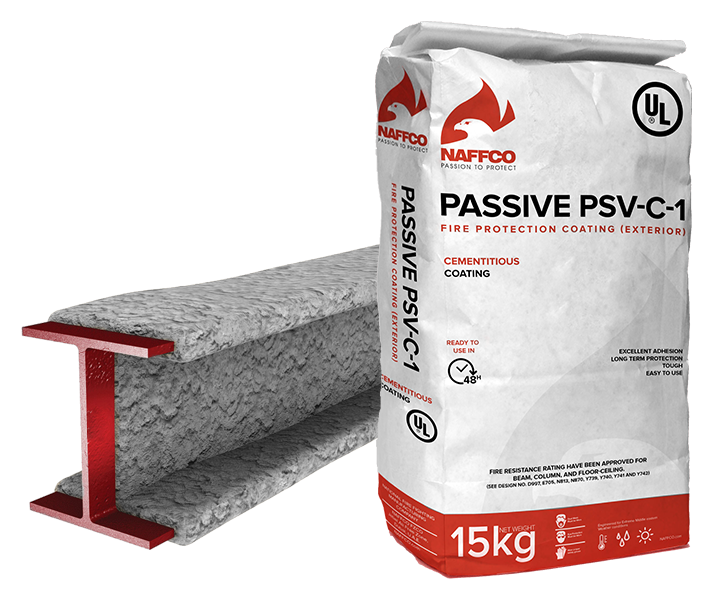
Cementitious fireproofing coating is a spray-applied or trowel-applied material composed of cement, binders, and lightweight aggregates. It provides passive fire protection by forming a heat-resistant barrier on steel structures, concrete, and other substrates. Ideal for high-rise buildings, industrial plants, and tunnels, this coating offers excellent thermal insulation and durability. Cementitious coatings meet UL, ASTM, and NFPA standards, providing reliable fire resistance for up to 4 hours. With fast application and cost-effectiveness, they are a proven choice for large-scale fire protection systems.

Gypsum board, or drywall, is a commonly used fire-resistant building material made from non-combustible gypsum encased in paper. Fire-rated gypsum boards contain glass fibers and additives that enhance fire performance, providing up to 2-hour fire resistance in walls, ceilings, and partitions. Gypsum drywall is lightweight, easy to install, and compliant with ASTM and NFPA codes. Ideal for residential, commercial, and institutional buildings, it offers an effective and economical passive fire protection solution with soundproofing and thermal insulation benefits.
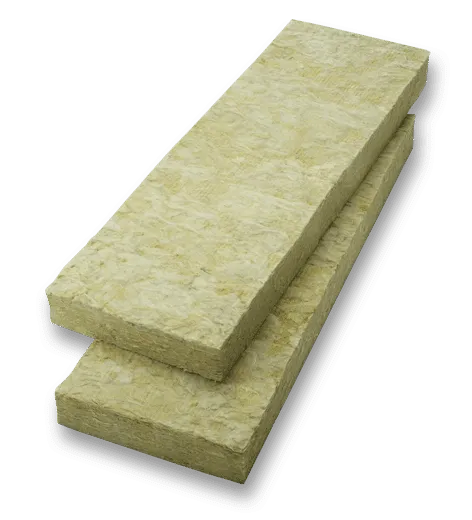
Mineral wool, also known as rock wool or stone wool, is a fire-resistant insulation material made from molten basalt rock spun into fibers. It provides superior fire protection, thermal insulation, and acoustic performance. Rated for temperatures over 1000°C (1832°F), mineral wool is non-combustible and does not emit toxic smoke. It is widely used in fire-rated wall assemblies, floor/ceiling systems, and firestop applications. Mineral wool meets ASTM E136 and EN standards, making it a reliable component in both active and passive fire protection systems.

Calcium silicate boards are high-performance, non-combustible fireproofing panels used in industrial and commercial applications. Manufactured from siliceous and calcareous materials reinforced with fibers, these boards offer excellent fire resistance, thermal insulation, and dimensional stability. They can withstand temperatures exceeding 1000°C and are ideal for duct enclosures, wall partitions, and cable trays. Calcium silicate boards meet international fire safety standards such as ASTM E119 and BS 476, making them a preferred choice for passive fire protection systems in demanding environments.

Perlite boards are lightweight, non-combustible panels made from expanded perlite combined with binders and fibers for enhanced fire resistance. They offer excellent thermal insulation and can withstand temperatures up to 1000°C. Used in wall linings, ceilings, and fire-rated enclosures, perlite boards provide passive fire protection with low thermal conductivity and high dimensional stability. These boards comply with ASTM and EN fire standards, making them suitable for use in both commercial and industrial fireproofing systems where weight and fire performance are critical.
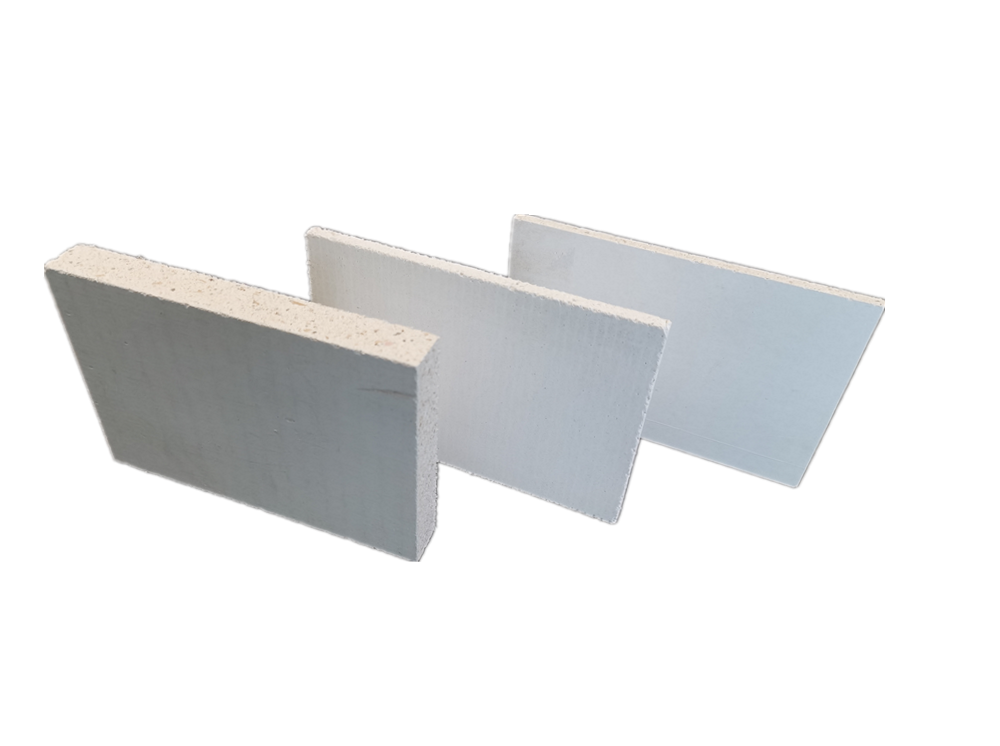
Magnesium Oxide (MgO) boards are advanced, non-combustible construction panels offering exceptional fire resistance, moisture resistance, and durability. Composed of magnesium oxide, magnesium chloride, and perlite, MgO boards can withstand temperatures above 1000°C and are ideal for fire-rated walls, ceilings, floors, and enclosures. They meet ASTM E136 and EN 13501 standards for fire performance and are resistant to mold, mildew, and insects. MgO boards provide a lightweight, eco-friendly solution for passive fire protection in residential, commercial, and industrial structures.

Firestop sealants and mortars are essential fireproofing materials used to seal gaps and joints in fire-rated assemblies. These UL-listed products prevent the spread of flames, smoke, and toxic gases through wall and floor penetrations. Sealants are flexible, intumescent, and suitable for electrical conduits, pipes, and cables. Mortars offer a durable, cementitious fire barrier ideal for large openings. Both comply with ASTM E814 and UL 1479 standards, ensuring code-compliant fire compartmentalization in buildings. They are vital for maintaining fire ratings and life safety in passive fire protection systems.
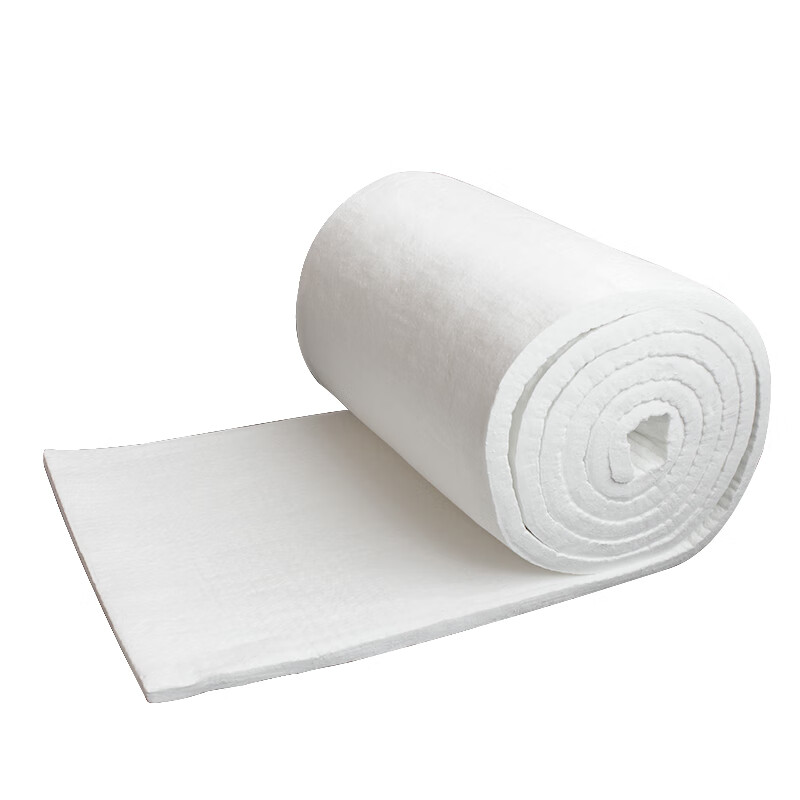
Ceramic fiber blankets and boards are high-temperature insulation materials made from alumina-silica fibers. These products offer outstanding thermal resistance up to 1260°C (2300°F), making them ideal for fireproofing industrial furnaces, kilns, and fire-rated enclosures. Lightweight, low in thermal conductivity, and easy to install, ceramic fiber blankets and boards are non-combustible and resistant to thermal shock. They meet ASTM C892 and EN 13501 standards, providing reliable passive fire protection in both commercial and heavy-duty industrial environments.
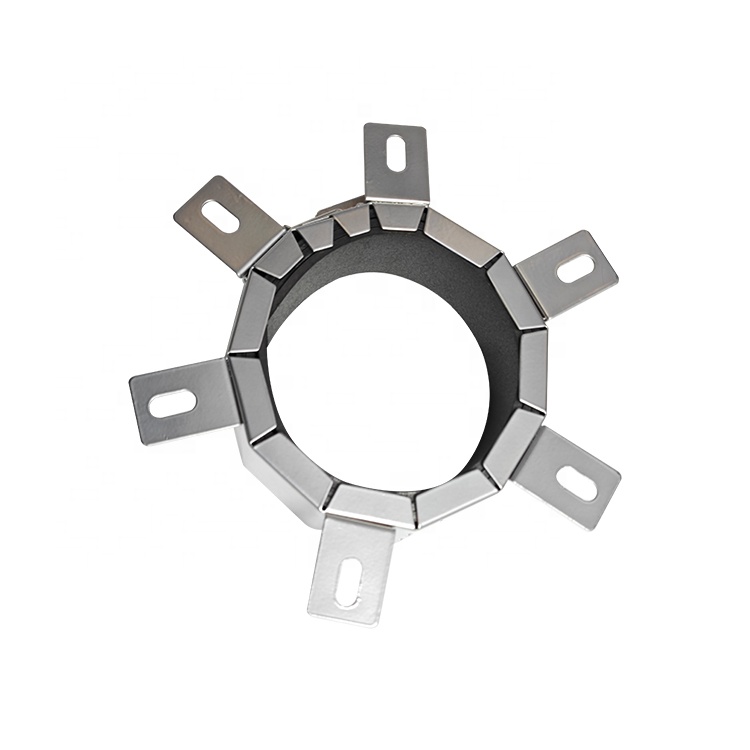
Intumescent wraps and collars are firestop products designed to protect combustible pipe penetrations through fire-rated walls and floors. Upon exposure to heat, these materials expand to seal the opening, preventing fire and smoke spread. Intumescent collars are ideal for PVC, CPVC, and other plastic pipes, while wraps are flexible for various geometries. Certified to UL 1479 and ASTM E814 standards, they are crucial for maintaining the integrity of fire-rated assemblies. Easy to install, they ensure code compliance and effective passive fire protection.
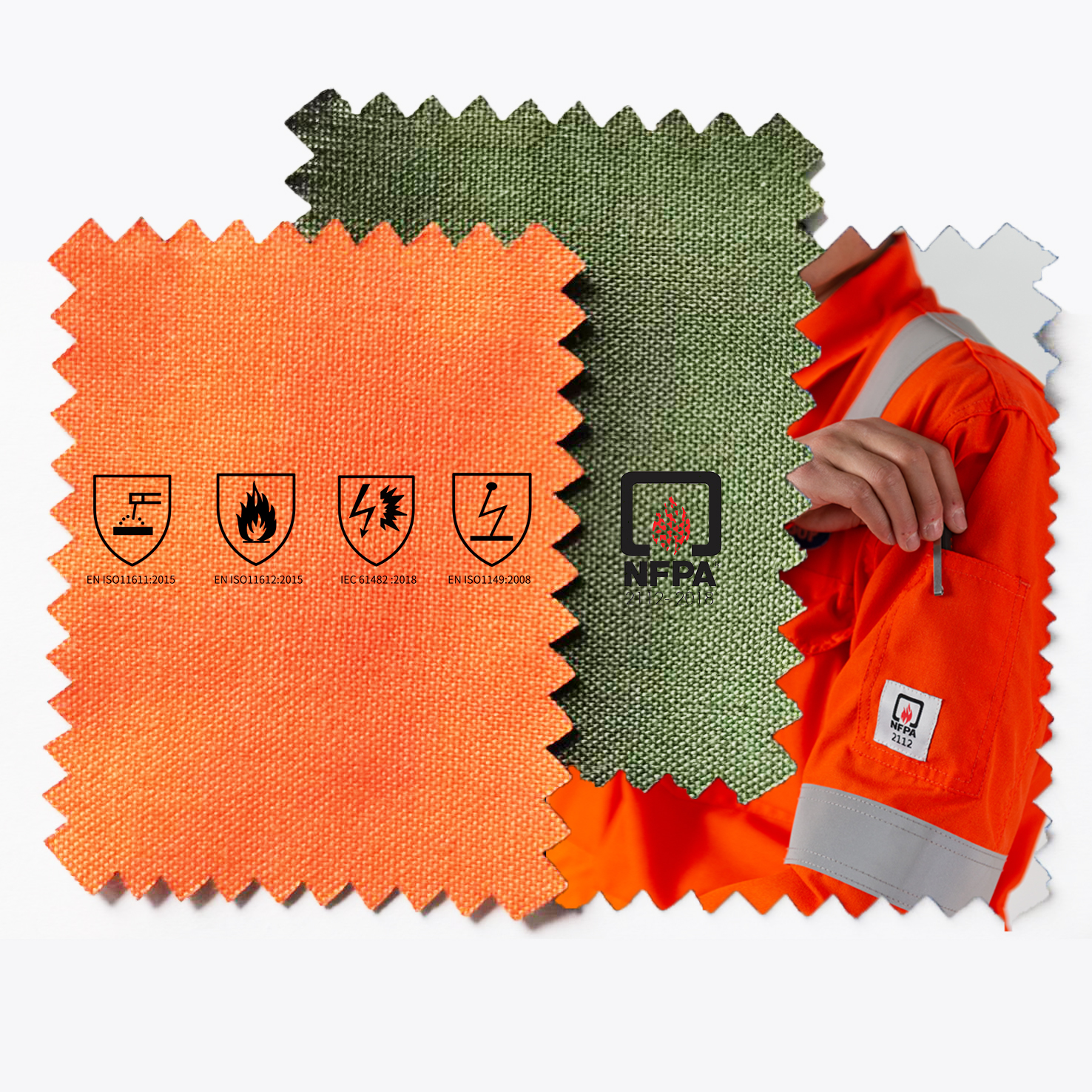
Fire-retardant fabrics are specially treated textiles that resist ignition and slow flame spread, offering enhanced fire safety in public spaces and industrial environments. Commonly used in curtains, stage drapes, upholstery, and protective gear, these fabrics meet NFPA 701 and BS 5867 standards. The chemical treatment forms a protective layer that prevents combustion, making them ideal for applications requiring both aesthetics and safety. Fire-retardant fabrics contribute to overall fire protection strategies in hotels, theaters, offices, and manufacturing facilities.

Fiberglass cloth is a woven fire-resistant material made from fine glass fibers, offering excellent heat resistance, mechanical strength, and dimensional stability. Withstanding temperatures up to 550°C (1022°F), it is used in fire curtains, insulation jackets, welding blankets, and electrical insulation. Non-combustible and chemically stable, fiberglass cloth meets NFPA 701 and ASTM E84 standards. Its flexibility and durability make it suitable for both passive fire protection and thermal insulation in industrial, marine, and commercial applications.